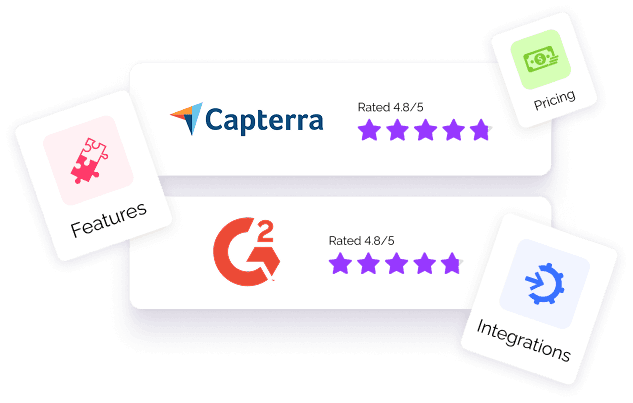What is The HIPAA Minimum Necessary Rule? Here's Everything You Need To Know


When it comes to PHI, the overall theme is "the less seen, the better". With so many avenues now available to access private health information, taking all necessary precautions becomes that much harder.
The HIPAA Minimum Necessary Rule was created to limit the number of people who have access to PHI. It stipulates that covered entities -- such as health care providers, clearinghouses, and insurance companies -- may only access, transmit, or handle the minimal amount of private health information needed to complete a specific task.
In this article, we'll be looking at:
-
What the HIPAA Minimum Necessary Rule is, and how it works
-
Exceptions to the HIPAA Minimum Necessary Rule
-
How to implement it in your organization
Let's dive in.
Note: If you are looking for the best way to stay compliant with all the HIPAA laws and regulations, try EasyLlama. Our bite-sized course can get your entire company compliant quickly. You won't have to worry about any violations or unnecessary fines. Check out our HIPAA compliance training.
How Does The Minimum Necessary Rule Work?
The HIPAA Minimum Necessary rule requires that covered entities take all reasonable efforts to limit the use or disclosure of PHI by covered entities and business associates to only what is necessary.
The HIPAA Minimum Necessary Standard is applied wherever protected health information (PHI) comes into play, from email exchanges between staff members to forms that are filled out by patients at the physician's office.
Also included are any forms of storage media such as computer hard drives, USBs, laptops, flash drives, etc.
So, how does this work in practice?
For example, if a coding department employee needs access to a patient's PHI to conduct pre-authorization for treatment, then they would need a limited set of information about that task. They should not have access to any other PHI without the expressed consent from the patient.
Similarly, if a hospital is contacted by a patient's insurance company and asked to release clinical information about the patient, all they need to provide is the minimum necessary PHI for this purpose. They don't need to give any more medical records than what is reasonably necessary for the insurance company.
What are "Reasonable Efforts"?
Reasonable efforts are all the actions taken by a covered entity to safeguard PHI. These include but are not limited to training employees on what constitutes an unauthorized use or disclosure of PHI, tightening network access restrictions, limiting data entry to only those who absolutely need it for their job function, using certain transmission methods which provide encryption of PHI ( i.e . Secure File Transfer Protocol), etc
Each one of these steps must be considered when determining if the HIPAA Minimum Necessary Standard has been successfully applied and implemented within your organization.
What are the Exceptions to the HIPAA Minimum Necessary Standard?
According to the Department of Health and Human Services, there are six exceptions to the Minimum Necessary Rule. And they include:
1. Disclosures required by law
2. Uses or disclosures for which an authorization is secured in accordance with the HIPAA Privacy Rule
3. Uses or disclosures that are required for compliance with the Health Insurance Portability and Accountability Act (HIPAA) regulations
4. Uses or disclosures made to the individual who is the subject of the Private Health Information
5. Uses or disclosures made for treatment, payment, and healthcare operations
6. Other uses and disclosures not described by this rule that requires your written agreement to comply with the HIPAA Minimum Necessary Standard
What is "Reasonable Reliance"?
Reasonable Reliance is a concept that allows an organization to rely on someone else's statement or guarantee, as long as it can be reasonably expected to believe the statements are true.
In certain circumstances, a covered entity may rely on disclosures or requests that specify the minimum necessary to accomplish the intended purpose.
However, a covered entity is not permitted in most instances to rely on a request from a business associate for a disclosure of protected health information to satisfy its own minimum necessary requirement under the Privacy Rule.
The covered entity must make its own determination of what constitutes the minimum amount of protected health information needed for the intended purpose of the disclosure.
What Happens When a Covered Entity Discloses More Than the Minimum Necessary Information?
Disclosing more PHI than is necessary to a recipient constitutes a violation of the HIPAA Privacy Rule.
The penalties for violating the rule depend on whether it's a willful disclosure or not, and also if it's a repeated violation, among other factors.
In most cases, this would result in sanctions from the HHS Office for Civil Rights (OCR).
Other penalties could include fines, the termination of contracts with the organization, and even imprisonment.
The most common penalties are warnings or corrective action plans, although sometimes organizations can receive heavier sanctions depending on the circumstances.
How To Implement the HIPAA Minimum Necessary Standard in Your Organization
So now that you know what the HIPAA Minimum Necessary Standard is, when it applies to your organization, and its exceptions, you might be wondering how to implement this rule within your organization.
Here are a few policies and procedures you can take to ensure HIPAA compliance:
Have a written policy in place
The first step is to have a written policy in place which states what the HIPAA Minimum Necessary Standard is, how it will be applied to your organization, and who can make exceptions to the rule.
Make sure your employees are aware of the policy and its importance
A key part of making any new change in your company culture or structure is to ensure that every member of your staff knows about this rule, and why it's so important for the health of your organization.
Implement an ongoing training program
Once you've written your policy and shared it with all of your staff, it's time to get started on implementing an ongoing training program that will reinforce the HIPAA Minimum Necessary Standard across all departments.
Get buy-in from your employees
Another key to successfully implementing this rule is to work with all of your employees and get their buy-in. This means everyone should be familiar with what it is, how it works, and why it's so vital that all PHI data within an organization follow this standard. You would not want any HIPAA complaints from your employees.
Monitor compliance with the HIPAA Minimum Necessary Standard
As with any change, it's important to monitor your teams and departments to ensure that they're fully complying with this rule. And if you find that some staff members or departments need more training or guidance on how to implement the standard successfully, then do so in a timely manner.
Keep documentation
Make sure to keep all documents demonstrating compliance with the HIPAA Minimum Necessary Standard. This includes any new policy changes or employee training, as well as who applied said policies and training within your organization.
Monitor Access to PHI
Consider putting in place monitoring systems to ensure employees are accessing the necessary amount of PHI within your organization. Have logs that monitor data access, and make sure to use software solutions for this monitoring as well.
Implement Just-in-time (JIT) access
You might also want to consider implementing Just-in-time (JIT) access which limits data access based on the need/use of that PHI.
This is a good way to ensure that employees are accessing only what they need for their specific job within your organization.
There isn't a one-size-fits-all approach to implementing JIT access, so you'll need to choose between manually tracking temporary access or utilizing an automated solution that will remove access to a resource after a certain period of time.
Set up alerts that notify the compliance team when violations occur
If you find that employees are accessing PHI they're not supposed to be seeing, then implement alerts that notify the compliance team when such violations occur. This allows you to address any potential HIPAA violations before they become a bigger issue.
Develop role-based permissions
Lastly, consider setting up role-based access controls within your organization to limit which types of PHI employees might be able to access. This is especially helpful if you have a small team and want to make sure everyone has the appropriate levels of access without worrying about oversharing.
For instance, some staff members only need patient data (PHI) for billing purposes, but other staff members might only need to access lab results or demographic data
By limiting each user's permissions, you can make sure that PHI is not overshared within your organization.





